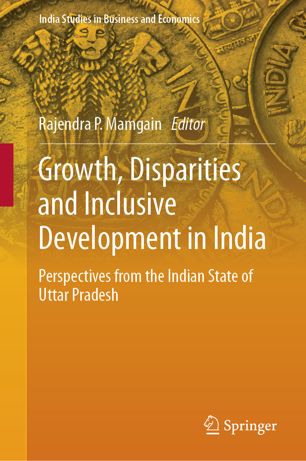

Most ebook files are in PDF format, so you can easily read them using various software such as Foxit Reader or directly on the Google Chrome browser.
Some ebook files are released by publishers in other formats such as .awz, .mobi, .epub, .fb2, etc. You may need to install specific software to read these formats on mobile/PC, such as Calibre.
Please read the tutorial at this link: https://ebookbell.com/faq
We offer FREE conversion to the popular formats you request; however, this may take some time. Therefore, right after payment, please email us, and we will try to provide the service as quickly as possible.
For some exceptional file formats or broken links (if any), please refrain from opening any disputes. Instead, email us first, and we will try to assist within a maximum of 6 hours.
EbookBell Team

5.0
98 reviewsThe book critically examines the high growth trajectory in India, particularly since the late 1980s, a period which is characterized by increasing inequality. Through various studies from the Indian state of Uttar Pradesh -- a state more populous than Brazil and with a GDP comparable to Bangladesh -- it sheds light on the link between growth and inequality in emerging economies. The slow pace of any upward movement in terms of various development indicators in low-income Indian states is due to a number of factors, including their historical disadvantages. Over a period of time, this has resulted in widening disparities, both between different regions of these states, and between these states and other more prosperous Indian states.
The book provides a holistic, yet critical, region-wise analysis of the achievements of Uttar Pradesh compared to other states and to India as a whole, in the context of indicators of inclusive development, namely, growth, employment, poverty, infrastructure, agriculture, industry, education and health. Based on the latest data and sophisticated analysis methods, it assesses inequality and development disparities, clearly identifying three major challenges that poorer states face in redressing poverty and expanding inclusive growth – increasing economic opportunities, empowering poor and marginalised groups to avail new opportunities in a rapidly changing world, and ensuring an effective safety net to reduce vulnerability.
The book suggests strategies for promoting high and sustained economic growth, and highlights the significance of broadening social inclusiveness through greater and more rapid access to economic and social opportunities, and building strong social safety nets to protect the chronically poor and mitigate their risks and vulnerabilities with the help of good governance and institutions. With contributions from leading scholars from the region, it is a valuable resource for researchers working in the area of growth and inequality, as well as for policy makers from developing economies around the globe.